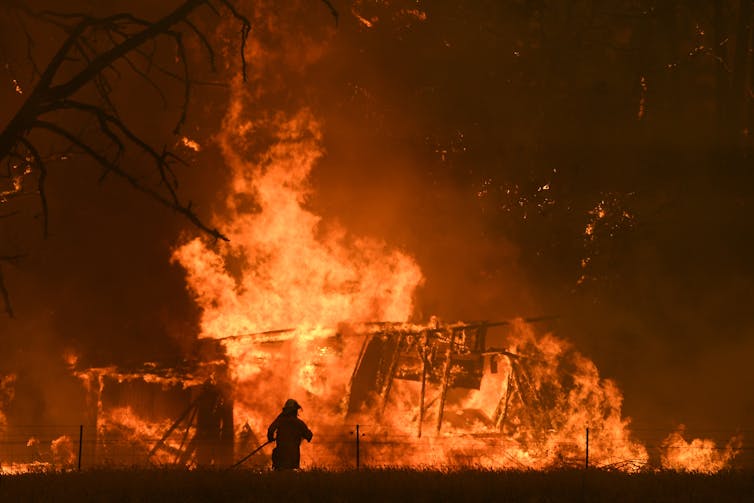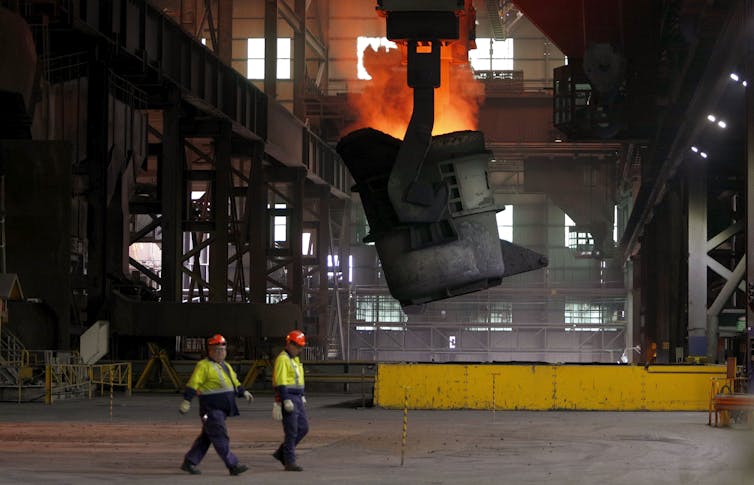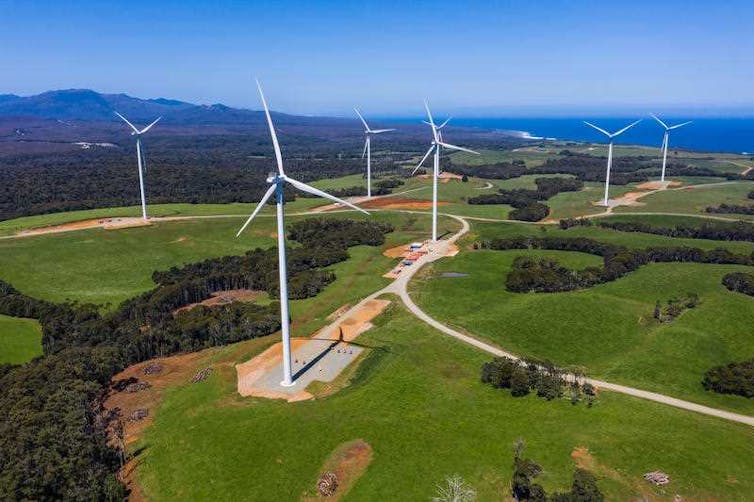Climate change and reducing emissions has figured little in the 2022 federal election campaign. But after many years of inadequate national climate policy, the need for sensible, long-term measures is now dire.
The first task of the government in Australia’s 47th parliament must be to increase the national emissions target for 2030. But this is just the first step. Australia urgently needs a proper policy framework to get the nation on a lower emissions path – systematically and for the long term.
A long to-do list on climate policy awaits the new government and those that follow. The issues before us are too difficult, too important and too pressing to abandon them to political point-scoring or ideological zealotry.

The to-do list
Years of climate policy inaction has left plenty of low-hanging fruit ready for the next government to harvest.
On Australia’s emissions reduction out to 2030, the Coalition already expects to do better than the existing 26-28% target. If returned to government, the Coalition could formally raise the target – but presumably there would be no appetite to raise it by much.
Labor has pledged 43% emissions reduction by 2030 – a target, like the Coalition, based on 2005 emissions levels. But that still falls short of the 46-50% cut urged by the Business Council of Australia, and is far less that the pledges of many other developed countries.
A meaningful target is needed to bolster confidence to low-carbon investors and signal to our international peers that we’re playing our part.
The next government needs to ensure continued private investment for new renewable energy generation, and help bring power infrastructure online quickly and affordably. That means meaningful reform in the national electricity market and working constructively with the states.
And however much it may go against political instinct, the next government must face up to the coal industry’s coming decline. It will need to manage coal plant closures without delaying the renewables transition, and plan for the inevitable fall in export demand for coal and later, gas.
Economies in regions such as central Queensland and the Hunter Valley in New South Wales will change. The federal government has a role in helping prepare for this, again in collaboration with the states.
Importantly, the next federal government must push Australia’s industrial sector to get more energy efficient and shift to renewables. That will keep energy-intensive industries globally competitive in the long term.

Making the existing “safeguards mechanism” effective is the obvious way to start. It should become a “baseline and credit” scheme covering all medium and large industrial polluters, with financial penalties for being above an emissions threshold and financial incentives for being below.
This would create a quasi-carbon price that can later be the stepping stone to a comprehensive carbon pricing scheme. Carbon taxes and emissions trading are widespread elsewhere in the world and a natural part of a comprehensive climate policy package.
The next government must help ensure the transition to electric cars, trucks and trains is smooth, speedy and fair – including through road tax reform. And it should adjust policy and regulation to further decentralise our energy system, including having electric cars providing power to the grid when and where needed.
In the building sector, we need meaningful national energy efficiency standards, low-carbon construction requirements and a push away from gas for heating.
But what about the cost? Many politicians have created fear by claiming strong climate action means economic doom. In reality, many carbon-saving investments pay for themselves over time in the form of lower energy costs. Others cost extra but bring benefits such as cleaner air and more secure energy supplies.
The decline of fossil fuel exports will hurt Australia economically, but this is out of our hands. The task here is to foster economic diversification, which should be central in national industry policy.
Beyond the question of lower emissions, it’s high time the federal government got serious about adapting to climate damage that’s already happening and will worsen.
The task for the next government, then, is to help make happen the large investments that will safeguards Australia’s future. This message should be attractive to politicians who want to be seen as leaders.

Making it happen
There is also more work to do to deeply understand the pathways to a cleaner economy in Australia, the problems we face and the opportunities that can be ours.
As just one example, properly funded science will help Australian agriculture progress towards the net-zero emissions goal. It would also help the sector better understand how to respond to challenges such as changed growing conditions and more frequent or severe floods and bushfires.
As a nation, we must also get serious about identifying where and how Australia could become a major player in the energy and commodity industries of a low-carbon world. Australia could be a major international supplier of clean energy and zero-carbon commodities.
To get there requires building trust and bringing everyone along.
Net-zero as a rallying point
So where to begin for the next government? A good start would be convening an inclusive process towards a proper, long-term strategy for Australia to reduce its emissions.
The goal of net-zero emissions by 2050 is a rare point of general agreement on climate policy – both across the political spectrum and among the main lobby groups.
But how might we get there? What will it mean for different industries and regions? Where do the economic upsides lie? What are the social pressure points? Finding answers to these questions should be the basis for a real national conversation – one that includes businesses, unions, communities, non-government organisations, the research sector and the media.
Such a process would be very different from that behind the document accompanying the Coalition government’s net-zero announcement late last year. Whoever is in government next has the chance to run an inclusive process that fully maps out the options and implications of net-zero.

A new politics
Whether the next government likes it or not, it will have to deal with climate policy. Obviously, the election outcome will be the key determinant for how far the next government is willing to go.
A Labor government would clearly plan to do more than a returned Coalition government. Either is likely to do more if governing in a parliamentary minority and supported by pro-climate independents.
Yet to get strong, wholehearted action at federal level would require a sea change in politics that presently is not on the cards. The climate wars of yesteryear are the root problem.
At some point this decade, however, Australia needs a complete political reset on climate policy. In a world that needs to act urgently and deeply on climate change, the political contest should be over how best to do much more.
Frank Jotzo does not have affiliations or funding sources that are relevant, or likely to be perceived to be relevant, to the subject of this article.
This article was originally published on The Conversation. Read the original article.







